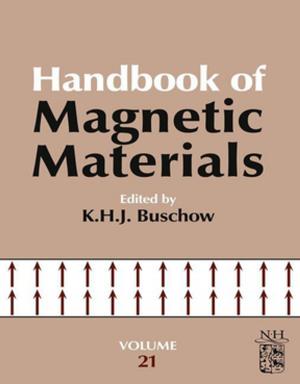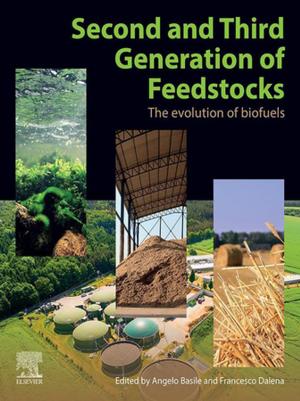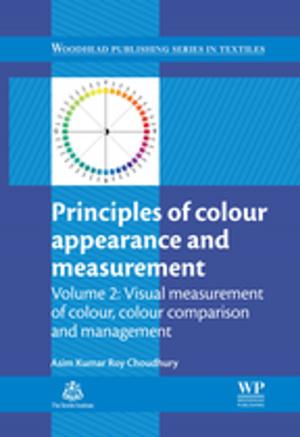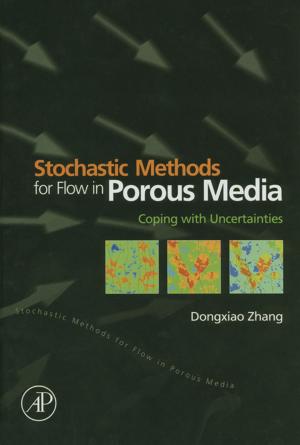Advanced Power Plant Materials, Design and Technology
Nonfiction, Science & Nature, Technology, Nuclear Energy| Author: | ISBN: | 9781845699468 | |
| Publisher: | Elsevier Science | Publication: | May 24, 2010 |
| Imprint: | Woodhead Publishing | Language: | English |
| Author: | |
| ISBN: | 9781845699468 |
| Publisher: | Elsevier Science |
| Publication: | May 24, 2010 |
| Imprint: | Woodhead Publishing |
| Language: | English |
Fossil-fuel power plants account for the majority of worldwide power generation. Increasing global energy demands, coupled with issues of ageing and inefficient power plants, have led to new power plant construction programmes. As cheaper fossil fuel resources are exhausted and emissions criteria are tightened, utilities are turning to power plants designed with performance in mind to satisfy requirements for improved capacity, efficiency, and environmental characteristics.
Advanced power plant materials, design and technology provides a comprehensive reference on the state of the art of gas-fired and coal-fired power plants, their major components and performance improvement options. Part one critically reviews advanced power plant designs which target both higher efficiency and flexible operation, including reviews of combined cycle technology and materials performance issues.
Part two reviews major plant components for improved operation, including advanced membrane technology for both hydrogen (H2) and carbon dioxide (CO2) separation, as well as flue gas handling technologies for improved emissions control of sulphur oxides (SOx), nitrogen oxides (NOx), mercury, ash and particulates. The section concludes with coverage of high-temperature sensors, and monitoring and control technology that are essential to power plant operation and performance optimisation.
Part three begins with coverage of low-rank coal upgrading and biomass resource utilisation for improved power plant fuel flexibility. Routes to improve the environmental impact are also reviewed, with chapters detailing the integration of underground coal gasification and the application of carbon dioxide (CO2) capture and storage. Finally, improved generation performance is reviewed with coverage of syngas and hydrogen (H2) production from fossil-fuel feedstocks.
With its distinguished international team of contributors, Advanced power plant materials, design and technology is a standard reference for all power plant engineers and operators, as well as to academics and researchers in this field.
- Provides a comprehensive reference on the state-of-the-art gas-fired and coal-fired power plants, their major components and performance improvement options
- Examines major plant components for improved operation as well as flue gas handling technologies for improved emissions control
- Routes to improve environmental impact are discussed with chapters detailing the integration of underground coal gasification
Fossil-fuel power plants account for the majority of worldwide power generation. Increasing global energy demands, coupled with issues of ageing and inefficient power plants, have led to new power plant construction programmes. As cheaper fossil fuel resources are exhausted and emissions criteria are tightened, utilities are turning to power plants designed with performance in mind to satisfy requirements for improved capacity, efficiency, and environmental characteristics.
Advanced power plant materials, design and technology provides a comprehensive reference on the state of the art of gas-fired and coal-fired power plants, their major components and performance improvement options. Part one critically reviews advanced power plant designs which target both higher efficiency and flexible operation, including reviews of combined cycle technology and materials performance issues.
Part two reviews major plant components for improved operation, including advanced membrane technology for both hydrogen (H2) and carbon dioxide (CO2) separation, as well as flue gas handling technologies for improved emissions control of sulphur oxides (SOx), nitrogen oxides (NOx), mercury, ash and particulates. The section concludes with coverage of high-temperature sensors, and monitoring and control technology that are essential to power plant operation and performance optimisation.
Part three begins with coverage of low-rank coal upgrading and biomass resource utilisation for improved power plant fuel flexibility. Routes to improve the environmental impact are also reviewed, with chapters detailing the integration of underground coal gasification and the application of carbon dioxide (CO2) capture and storage. Finally, improved generation performance is reviewed with coverage of syngas and hydrogen (H2) production from fossil-fuel feedstocks.
With its distinguished international team of contributors, Advanced power plant materials, design and technology is a standard reference for all power plant engineers and operators, as well as to academics and researchers in this field.
- Provides a comprehensive reference on the state-of-the-art gas-fired and coal-fired power plants, their major components and performance improvement options
- Examines major plant components for improved operation as well as flue gas handling technologies for improved emissions control
- Routes to improve environmental impact are discussed with chapters detailing the integration of underground coal gasification















